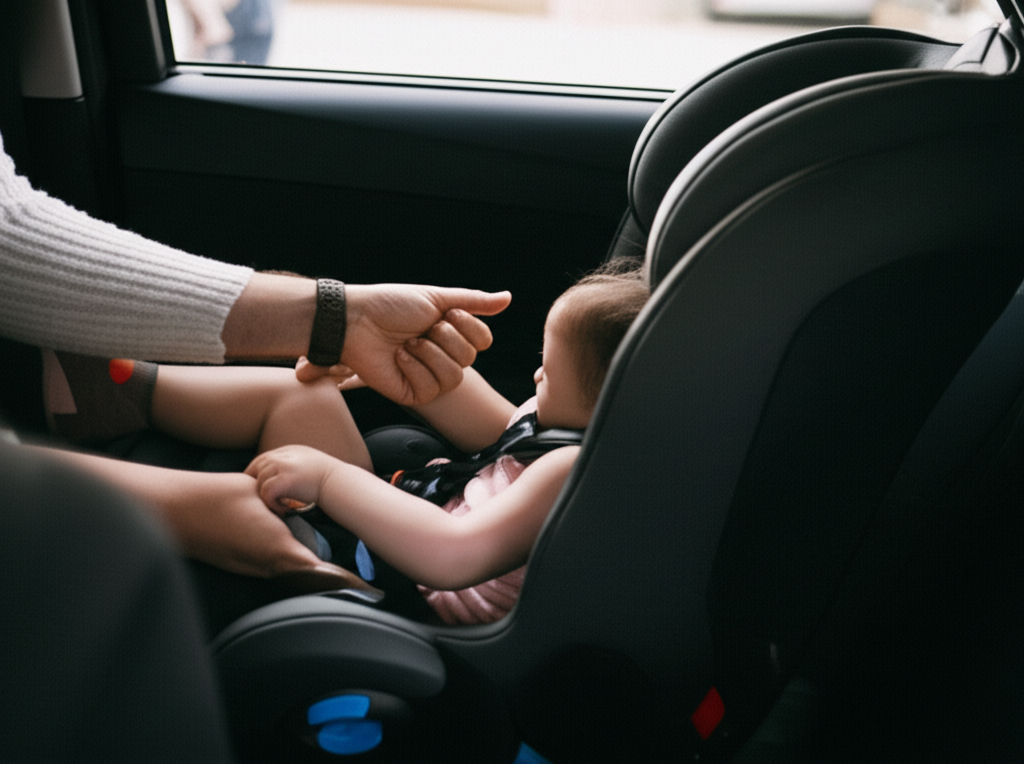How Teachers Use BandLab for Education
Ikhsan Rizki

Photo: Discover how teachers use BandLab for Education to transform music learning, making it dynamic, collaborative, and accessible for all students.
Empowering Education: How Teachers Use BandLab for Dynamic Music Learning
In an increasingly digital world, traditional classroom methods are evolving, and music education is no exception. Teachers are constantly seeking innovative tools to engage students, foster creativity, and make learning accessible to all. Enter BandLab for Education – a powerful, free, and cloud-based platform that is revolutionizing how music is taught and learned. But how exactly are educators harnessing this versatile tool to transform their classrooms?
This comprehensive guide will explore the myriad ways teachers leverage BandLab to create engaging, collaborative, and personalized music learning experiences, addressing common challenges in modern music education.
What is BandLab for Education and Why is it Essential?
BandLab for Education is a specialized version of the popular BandLab music creation platform, tailored specifically for schools and learning environments. It provides a secure, ad-free, and walled-garden space where students and teachers can create, collaborate, and share music projects.
At its core, BandLab serves as a Digital Audio Workstation (DAW) in the cloud, offering a vast array of features typically found in professional studios, but made accessible and intuitive for educational purposes. Key elements include:
- Cloud-Based Accessibility: No need for expensive software or powerful computers. BandLab runs directly in a web browser (optimally Chrome) and is accessible on virtually any device, including PCs, Macs, Chromebooks, iOS, and Android devices. This democratizes music creation, making it available to students from diverse backgrounds.
- Comprehensive Toolset: It boasts over 100 virtual instruments (keyboards, synthesizers, drums, strings, wind instruments), a vast library of over 10,000 professionally recorded loops across various genres, and a suite of effects for mixing and mastering. The "Mix Editor" has even been rebranded as "Studio" with updated features like Drum Machine, AutoPitch, and Sampler to enhance the creative process.
- Collaborative Environment: Designed for real-time collaboration, BandLab allows multiple students to work on the same project simultaneously, fostering teamwork and shared creativity.
- Teacher Management System (TMS): Educators gain robust control through a dedicated interface, enabling them to create and manage schools and classrooms, assign tasks, monitor student progress, provide feedback, and even grade submissions.
Why is this so crucial for today's educators? BandLab addresses the need for engaging, inclusive, and technology-driven music education, moving beyond traditional methods to meet students where they are.
Practical Ways Teachers Use BandLab in the Classroom
The versatility of BandLab means it can be integrated into various aspects of the music curriculum, from foundational concepts to advanced production techniques.
Music Creation & Production
Teachers utilize BandLab to empower students to become active music creators rather than just passive listeners.
- Songwriting and Composition: Students can write their own lyrics, compose melodies, and build complete songs from scratch using virtual instruments and loops. Imagine a class where every student creates a unique jingle for a school event!
- Beat Making and Production: With the built-in drum machine and extensive loop library, students can easily explore rhythm, create beats, and understand the structure of popular music genres.
- Recording and Editing: BandLab allows direct recording via microphones or connected instruments, enabling students to capture their own vocals, instrumental performances, or even field recordings, and then edit them within the intuitive "Studio" environment.
Collaboration & Group Projects
BandLab's real-time collaboration features are a game-changer for group work, whether in-person or remote.
- Virtual Bands: Students can form virtual bands, each contributing different instrumental parts or vocals to a shared project, regardless of their physical location. This mirrors real-world music production workflows.
- Collaborative Compositions: Teachers can assign group compositions where students collectively build a track, learning about musical arrangement, texture, and dynamics in a highly interactive way.
- Peer Feedback: The collaborative nature extends to feedback, allowing students to share their work with peers and receive constructive criticism within the platform.
Performance & Practice
Beyond creation, BandLab supports instrumental and vocal development.
- Recording Practice Sessions: Students can record their practice sessions, allowing for self-assessment and targeted improvement. Teachers can review these recordings and provide personalized feedback.
- Virtual Performances: Students can record individual parts and then combine them for a virtual ensemble performance, which can be shared with the class or school community.
Sound Design & Audio Engineering Basics
BandLab introduces students to the fundamentals of audio manipulation and production.
- Exploring Effects: Students can experiment with various audio effects (reverb, delay, distortion) to understand how they shape sound and create different moods.
- Podcast Production: The platform is excellent for producing podcasts or audio dramas, where students can record voices, add background music, and incorporate sound effects. This integrates music technology with broader media literacy skills.
Music Theory & Aural Training
BandLab can make abstract music theory concepts tangible and engaging.
- Interactive Exercises: Teachers can design assignments where students apply music theory concepts by composing short pieces that demonstrate specific scales, chords, or rhythmic patterns.
- Aural Skill Development: By manipulating pitch and rhythm, students can develop their ear training skills in a hands-on manner.
Benefits of Integrating BandLab into Your Curriculum
The adoption of BandLab for Education offers numerous advantages for both educators and students, fostering a more dynamic and inclusive learning environment.
- Increased Student Engagement & Motivation: BandLab's interactive and modern interface resonates with students, making music lessons more appealing and relevant to their digital lives. Students are motivated when they can create music in genres they love.
- Fosters Creativity & Critical Thinking: The open-ended nature of the platform encourages students to experiment, innovate, and solve creative problems, developing essential critical thinking skills.
- Develops 21st-Century Skills: Students gain proficiency in digital literacy, online collaboration, problem-solving, and project management – skills vital for future success in any field.
- Accessibility & Inclusivity: As a free, cloud-based tool, BandLab removes significant barriers to entry, such as the cost of instruments or software. This ensures that all students, regardless of their socioeconomic background or prior musical experience, can participate in music creation. It even supports multilingual students from various countries.
- Personalized Learning Paths: Teachers can tailor assignments to individual student needs and interests, allowing for differentiated instruction and empowering students to take ownership of their learning journey.
Getting Started with BandLab for Educators: Actionable Steps
Ready to bring BandLab into your classroom? The setup process is straightforward, designed to get you and your students creating music quickly.
- Create a Teacher Account: Visit
edu.bandlab.comand sign up as a teacher. It's crucial to register as a teacher to access the full range of educational features. - Create Your School: Once logged in, you'll be prompted to create your school. Fill in the necessary details like your school's name. You can add multiple schools if needed.
- Create Your Classrooms: Within your school, you can create multiple classrooms, each with a specific name and description. This allows you to organize different courses or student groups.
- Invite Your Students: BandLab offers several simple ways to invite students:
- Join Code: Each classroom generates a unique 7-digit code that students can use to join your class when they sign up at
edu.bandlab.com. - Join Link: You can also copy and share a direct link that will lead students to your classroom.
- Manual Email Invite: For more control, you can manually input student email addresses to send invitations from within BandLab.
- Join Code: Each classroom generates a unique 7-digit code that students can use to join your class when they sign up at
- Start Creating Assignments: Utilize the Teacher Management System to create assignments, add project briefs, and even attach resources. Students can then access these assignments and submit their work directly through the platform.
- Explore Resources: BandLab provides teacher tutorials and resources to help you integrate the platform effectively into your curriculum. Many educators also share lesson plans and tips online.
Conclusion
BandLab for Education is more than just a music creation tool; it's a dynamic platform that empowers teachers to cultivate creativity, collaboration, and critical thinking in their students. By providing a free, accessible, and engaging environment for music production, it helps bridge the gap between traditional music education and the digital world students inhabit. Embracing BandLab can truly transform your music lessons, making them more relevant, exciting, and inclusive for every learner.
Are you ready to unlock your students' musical potential? Explore BandLab for Education today and share your experiences in the comments below! What innovative ways are you using technology in your classroom?
Frequently Asked Questions
Is BandLab for Education truly free?
Yes, BandLab for Education is completely free to use for teachers and students. It offers unlimited projects, secure storage, collaboration features, and high-quality downloads without any hidden costs. This makes it an incredibly cost-effective solution for schools.
What age group is BandLab for Education best suited for?
BandLab for Education is designed to engage students of all ages and abilities, from beginners to more experienced musicians. While the general BandLab platform requires users to be 13 or older, BandLab for Education specifically addresses privacy concerns for younger students. For children under 13, parental consent is required, and the platform implements measures to ensure a safe environment.
Do teachers need prior music production experience to use BandLab?
No, teachers do not need extensive prior music production experience. BandLab for Education is designed with an intuitive interface that makes it easy for beginners to operate. There are numerous tutorials and resources available, and many teachers find they can learn alongside their students, developing their own skills as they teach. The focus is on facilitating creativity and learning, not on being a seasoned audio engineer.
How does BandLab for Education ensure student privacy and safety?
BandLab for Education prioritizes student privacy and provides a safe, controlled environment. Key safety features include:
- Walled Garden Environment: Students only interact within their assigned classroom, and teachers have total control over who is invited.
- No Public Sharing (in Education version): Unlike the public BandLab platform, the education version is designed to keep student projects private within the classroom or school, preventing unmonitored sharing outside the secure environment.
- Retired Chat Feature: The chat feature has been removed from the Studio to maintain a more focused and distraction-free learning environment, encouraging communication through other classroom tools.
- COPPA Compliance: BandLab for Education is designed to be compliant with the Children's Online Privacy Protection Act (COPPA), requiring parental consent for students under 13.
- Teacher Control: Teachers manage assignments, student access, and can monitor progress, ensuring a secure and productive space for learning.
Business
View All
November 25, 2025
Pros and Cons of Leasing Business SpaceConsidering leasing business space? Discover the advantages & disadvantages of renting commercial property to align with your business goals.
Ikhsan Rizki

September 23, 2025
Business Casual Dresses You’ll LoveUnlock effortless office style! Discover how business casual dresses can be your secret weapon for comfort, style, and professionalism at work.
Ikhsan Rizki

September 8, 2025
Use NE Business Search the Right WayUnlock Nebraska's official business data! Master the free NE Business Search tool for name availability, due diligence, and competitor analysis.
Ikhsan Rizki

September 18, 2025
How to Use the BECU Business LoginMaster BECU Business Login for seamless financial management. Learn how to access powerful online banking tools & features for your company.
Ikhsan Rizki

November 19, 2025
District of Columbia Business Search GuideMaster DC business searches! Our guide shows how to use CorpOnline for due diligence, name checks, and consumer protection in Washington D.C.
Ikhsan Rizki

October 24, 2025
Philippine Airlines Business ClassIs Philippine Airlines Business Class worth it? Our comprehensive guide details PAL's premium experience, from priority services to lounge access, helping you d...
Ikhsan Rizki
Economy
View AllUncover the Middle Colonies' economic secrets! Learn how their rich soil, diverse crops, and bustling trade made them colonial America's "Breadbasket."
Ikhsan Rizki
Economy lube: Is it a smart save or a hidden cost? Learn the truth about budget car maintenance to protect your wallet and your ride.
Ikhsan Rizki
Discover the critical flaws of command economies. Learn how central planning breeds inefficiency, stifles innovation, and limits individual freedom.
Ikhsan Rizki
How did Trump's tariffs reshape the US economy? Explore their real impact on prices, jobs, industries, and global trade.
Ikhsan Rizki
Demystify Economy 2.0! Explore the digital transformation, AI, and interconnectedness driving the future of our global economy.
Ikhsan Rizki
Considering a budget stay in Memphis? Discover if Economy Hotel Memphis is worth it! This guide explores its amenities, location, and what to expect.
Ikhsan Rizki
Education
View AllConsidering a career as an SLP? This guide breaks down the Speech-Language Pathologist education path, from degrees to certification, for a rewarding future.
Read MoreUnlock real-world financial expertise with Bloomberg for Education. Gain practical skills using the Bloomberg Terminal & prepare for a successful career.
Read MoreDream of becoming a child doctor? This roadmap outlines every step of the pediatrician education requirements, from undergrad to board certification.
Read MoreIllinois educators, find your ideal financial partner! Discover how IECU offers tailored services, better rates, and true support for your unique needs.
Read MoreOTs: Elevate your practice! Discover how continuing education boosts skills, advances careers, and enhances patient outcomes. More than just CEUs.
Read MoreEmpower your breastfeeding journey! Explore top lactation education resources, including online courses & books, for confident and successful feeding.
Read MoreHealth
View All
October 15, 2025
Is Crest Pro Health Worth ItIs Crest Pro-Health worth it? Explore its 8 advanced benefits for comprehensive oral care & decide if it's right for your smile.
Ikhsan Rizki

August 31, 2025
Community Health Worker Job TipsAspiring Community Health Worker? Discover essential tips to land your dream CHW job, understand the role, and make a real difference in communities.
Ikhsan Rizki

November 14, 2025
Home Health Jobs You’ll LoveDiscover rewarding home health jobs! Enjoy flexibility, personalized care, and great job security in a booming field. Make a real difference.
Ikhsan Rizki

September 10, 2025
UMB Health Savings Account GuideUnlock your health & wealth with a UMB HSA! Our guide covers basics, advanced strategies, and tax benefits to manage costs & save for the future.
Ikhsan Rizki

November 7, 2025
Prince Charles and Health InsightsDiscover King Charles III's unique health philosophy: integrated care, natural remedies, and organic living. Learn from his holistic approach.
Ikhsan Rizki

November 5, 2025
One Brooklyn Health System UpdateOne Brooklyn Health System updates: Learn how OBHS is enhancing care, facilities, and technology to improve health and wellness for Brooklyn residents.
Ikhsan Rizki
Popular Articles
View All
1
2
3
4
5
6
7
8
9
10
Lifestyle
View All
October 17, 2025
Fast Ways to Get Sims Lifestyle Points
Get free Sims FreePlay Lifestyle Points fast! Master the cooking hobby hack and other quick methods to boost your game and live your best virtual life.

August 31, 2025
Kasi Lifestyle 3D Breakdown
Discover the vibrant Kasi Lifestyle! Unpack South Africa's unique township culture, community spirit, and economic ingenuity in this 3D breakdown.

October 21, 2025
Why Choose Lifestyle Barber Studio
Elevate your grooming at Lifestyle Barber Studio. Experience personalized service, expert barbers, and a unique, relaxing atmosphere for your perfect look.

November 17, 2025
Top Lifestyles Rich and Famous Episodes
Relive the "champagne wishes & caviar dreams"! Explore the top episodes of Lifestyles of the Rich and Famous that defined an era of luxury.

October 6, 2025
Avalon Nail Salon Lifestyle Guide
Explore Avalon Nail Salon services, what to look for in a great salon, health benefits of nail care, and essential home tips.

September 10, 2025
Must Haves From the Miniverse Lifestyle Home
Uncover Miniverse Lifestyle Home's must-have miniatures. Transform your space with unique, charming, and collectible tiny decor.

August 7, 2025
Rich Homie Quan lifestyle lyrics
Decode Rich Homie Quan's "lifestyle" lyrics. Unpack themes of rags-to-riches, wealth, loyalty, and street life in his impactful music.

August 13, 2025
Exploring Modern Vampire Lifestyle
Beyond fiction: Explore the modern vampire lifestyle as a real subculture. Discover its identity, aesthetic, and nocturnal allure, dispelling myths.
Sports





Travel
View All
October 21, 2025
How Far a Bullet Can Travel
Demystify bullet travel! Learn the real distances, key factors, and science behind how far a bullet can truly go. Essential for safety & knowledge.

September 17, 2025
Joes Travel Plaza Stop and Eat
Tired of bad road stops on I-5? Joes Travel Plaza in CA is your ultimate oasis! Enjoy diverse dining, essential amenities & comfort for weary travelers.

October 18, 2025
Travel Consent Form for Minors PDF
Traveling with kids? Learn why a Travel Consent Form for Minors PDF is crucial for safe, hassle-free journeys when children travel without both parents.

August 7, 2025
How to Choose the Best Travel Car Seat
Ditch bulky car seats! Find the best lightweight, portable travel car seat for safe, stress-free family adventures. Your ultimate guide.

October 24, 2025
Fairburn Family Travel Center Road Trip Stop
Fairburn Family Travel Center: Your ultimate road trip oasis! Refuel, refresh, and recharge with unmatched comfort & amenities for the whole family.

October 27, 2025
Luxury Travel Magazine for Dreamers
Ignite your wanderlust with a luxury travel magazine. Discover curated experiences, hidden gems & sophisticated escapes for dreamers.

















